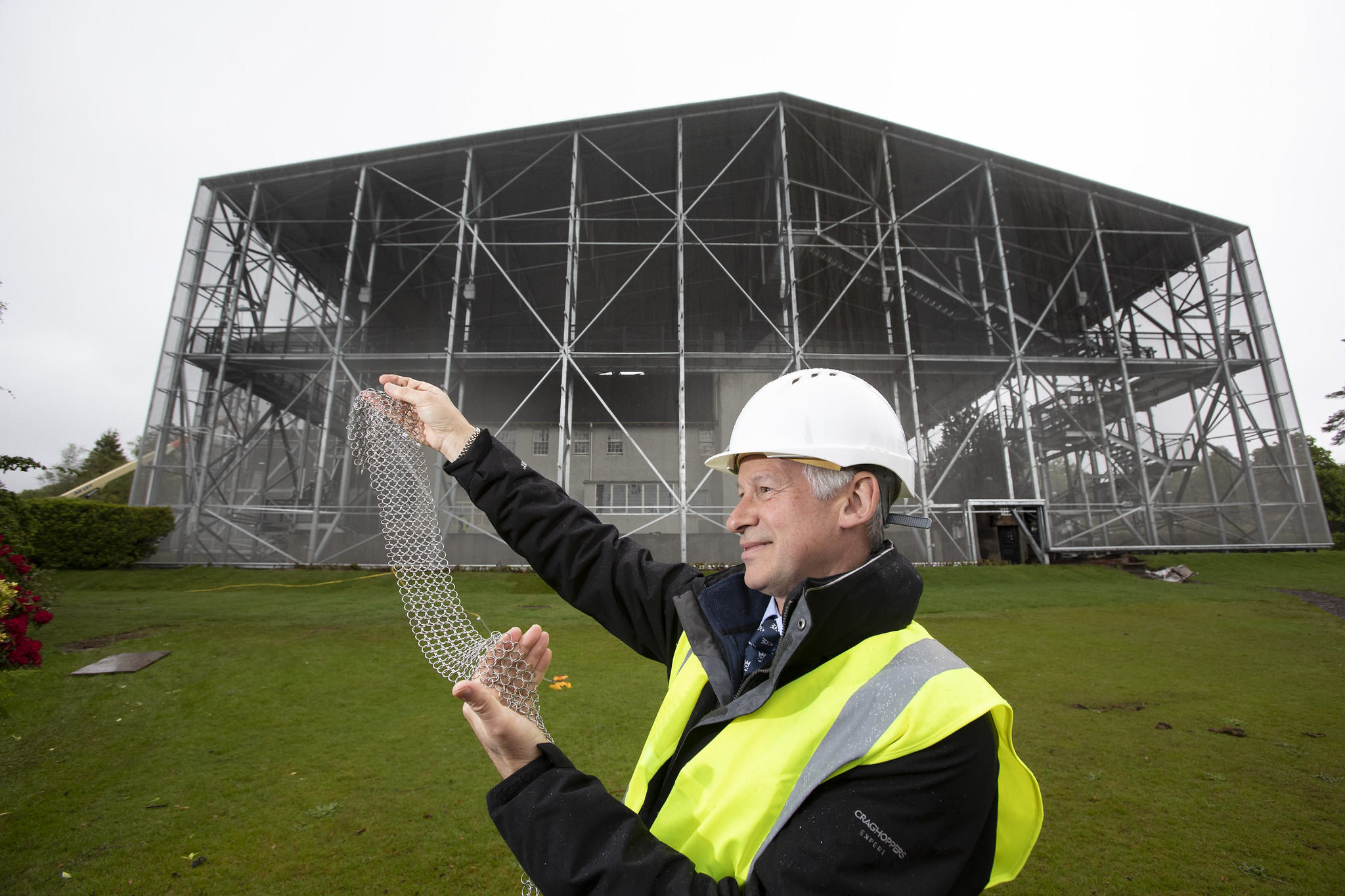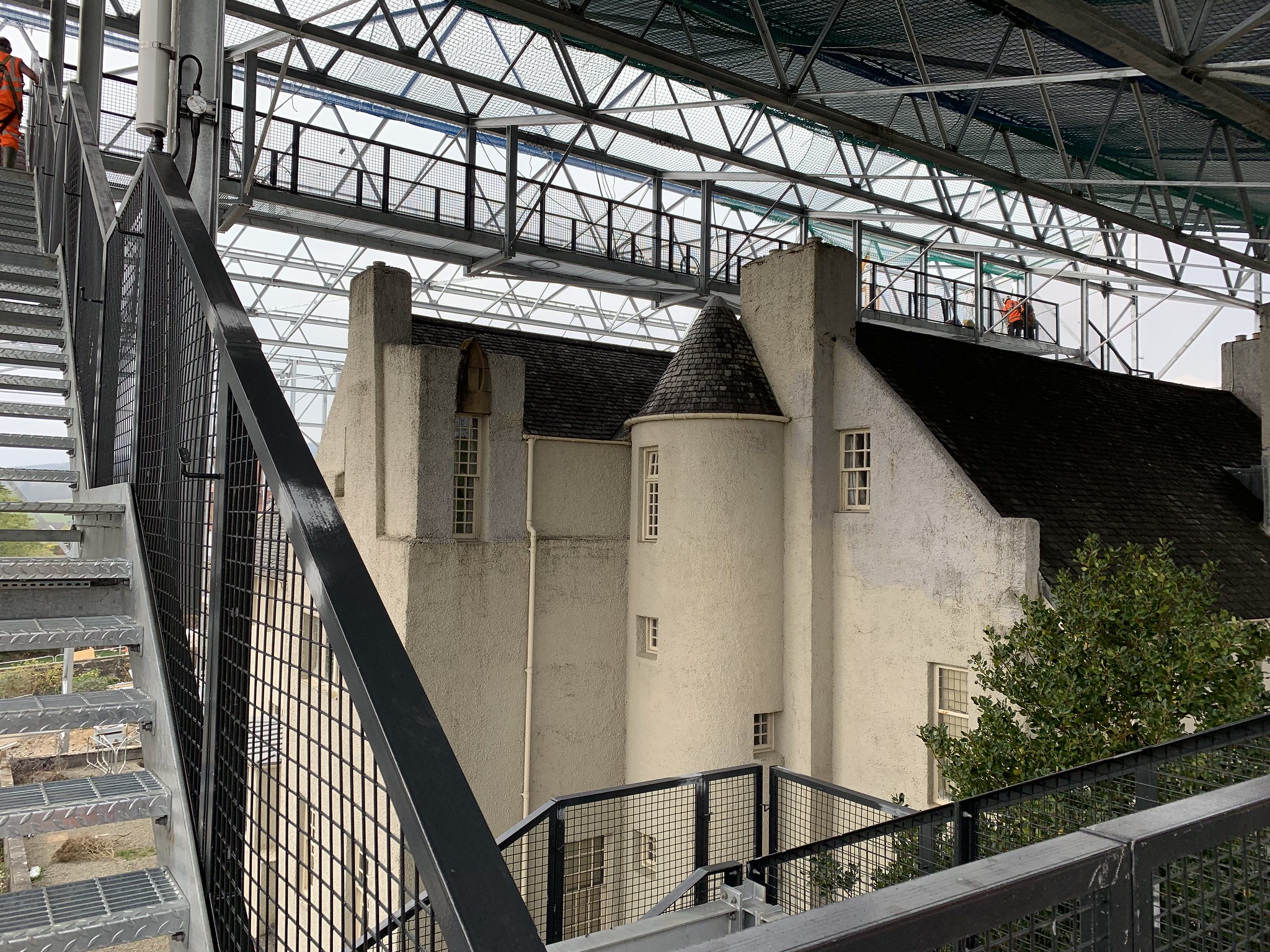
Saving Mackintosh classic house for the future
One of the finest examples of domestic architecture by architect Charles Rennie Mackintosh is now being saved for the future.
The Glasgow publisher Walter Blackie commissioned Mackintosh to design the house in Helensburgh in 1902 and construction was completed in 1904.
At a cost of £6,652, Mackintosh, along with his wife Margaret MacDonald, oversaw the design and construction of every detail of the Hill House, which was completed in 1904.
But more than a century of the Scottish weather has taken its toll on the building, prompting the need to encase Hill House in a box, to allow it to dry out after years of abuse from the conditions.
In 1953, the property was sold to Mr T Campbell Lawson. In 1972, it was sold to the Royal Incorporation of Architects in Scotland (RIAS) and by 1978 the Landmark Trust took over a specially converted top flat for holiday-letting.
The National Trust for Scotland acquired the Hill House in May 1982, with financial assistance of £425,000 from the National Heritage Memorial Fund.
Since 1902 the Hill House has been battered by 193 days of rain per year (on average). Mackintosh’s experimental design, coupled with his trial of new materials, has meant the house now shows signs of serious deterioration.

The Hill House has been enclosed within a box to protect it from the elements (Photo: Martin Shields)
Mackintosh made use of Portland cement to form a smooth layer of render. Unfortunately, the finish allowed water to penetrate the sandstone from the day it was first applied. Decades of driving west coast wind and rain have saturated the wall of the Hill House – and threaten the long-term survival of the building and its priceless, Mackintosh-designed interior.
Various attempts by previous owners, as well as by the Trust and partners, have been made to protect the Hill House and repair the cement harling that covers the outside of the building. Sadly, none of these solutions has proved permanent.
The Hill House Box is the National Trust for Scotland’s innovative solution to the problem of water damage at the Hill House and to permanently save the property and its irreplaceable collection.
The Box will act as a giant shield covering the entire building, protecting it from the rain while allowing the house to dry out and conservators to begin their work rescuing this iconic home.
The Hill House Box is a semi-transparent shelter around the main house, consisting of a steel roof and a frame encased in chainmail, completed at the weekend. It has been designed specifically for the Hill House, meaning that the garden within the Box is maintained and protected (trees will continue to grow inside the Box), as well as allowing the building to remain visible.
Once the house is protected from the rain, conservators can start the process of drying the building out naturally. This will be done gradually in controlled conditions – if it happens too fast it could cause structural damage. The Box is designed to allow 13% of rain to reach the house.
The National Trust for Scotland will then, with the support of international organisations such as The Getty Foundation and a specially appointed advisory panel, be able to understand the extent of the damage caused by the water, and begin to take corrective steps.
It may take up to three years for the house to dry out fully before conservation work can begin in earnest. The National Trust for Scotland will then need to develop a long-lasting solution, and implement it. This means the Hill House Box may have to stay in place for between seven and ten years.
Both the interior of the Hill House itself and the Box will be accessible to the public (including disabled access) over the course of the rescue process and they will be able to watch conservators at work.
The Hill House Box’s design includes several walkways around the upper levels and over the roof. These will provide a totally new way to experience the house and Mackintosh’s design, as well as offering stunning views over the Clyde estuary.
The National Trust for Scotland has also built a new café and visitor centre, meaning even more people can experience the house and learn about Charles and Margaret Mackintosh and the Blackie family whom the house was built for.
The total cost of rescuing the Hill House will be in the region of £4.5 million. Of this, £3 million is being drawn down from the National Trust for Scotland’s reserves.
The remaining £1.5 million is coming from donations to the largest single fundraising campaign ever undertaken by the charity.
Donations came from many generous benefactors, including the National Trust for Scotland USA Foundation.
Groundwork began in December 2018 and steelwork came onsite from January 2019 onwards. The Hill House and Box conservation project will open to the public on June 7 2019.

Inspecting Hill House from above (Photo: Martin Shields)
Public access will begin on Friday, 7 June
Entry is by timed ticket from www.nts.org.uk/visit/events/the-hill-house-timed-admission and timed ticket slots are available at 30-minute intervals from 10am–3.30pm. Cost of entry – Adult £12.50; Child £5.50; Family £28.; One adult family £17.
National Trust for Scotland and National Trust members will of course be able to visit the box for free.
Parking is available at Helensburgh’s waterside and a free shuttle bus to the house will be in operation from Saturday, 8 June.
TAGS

